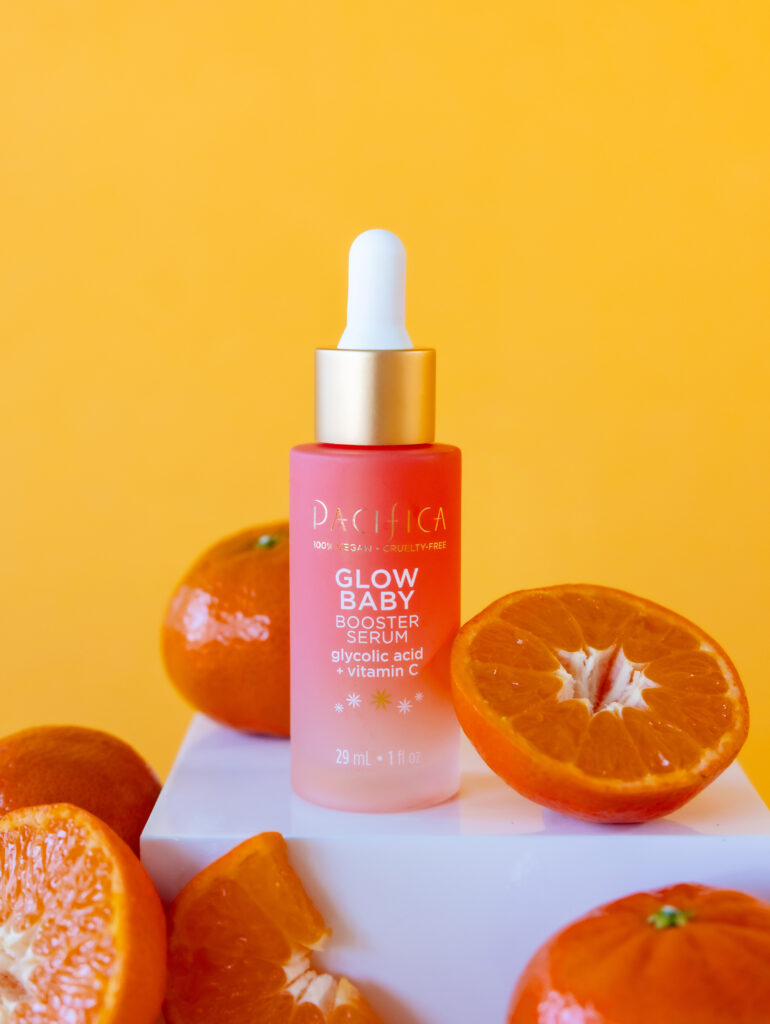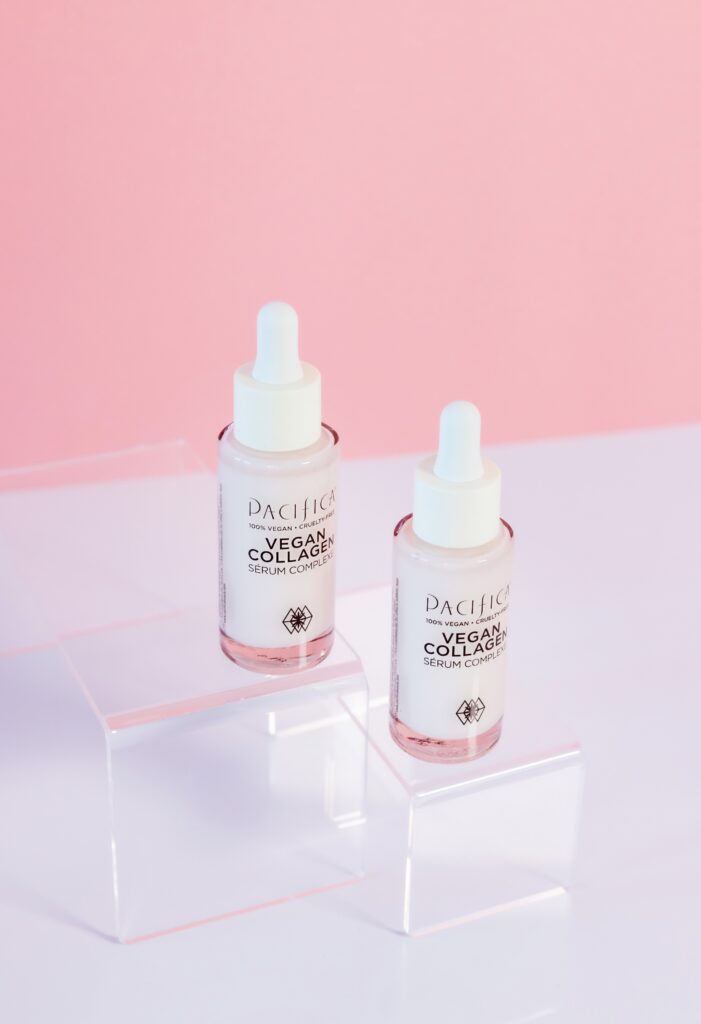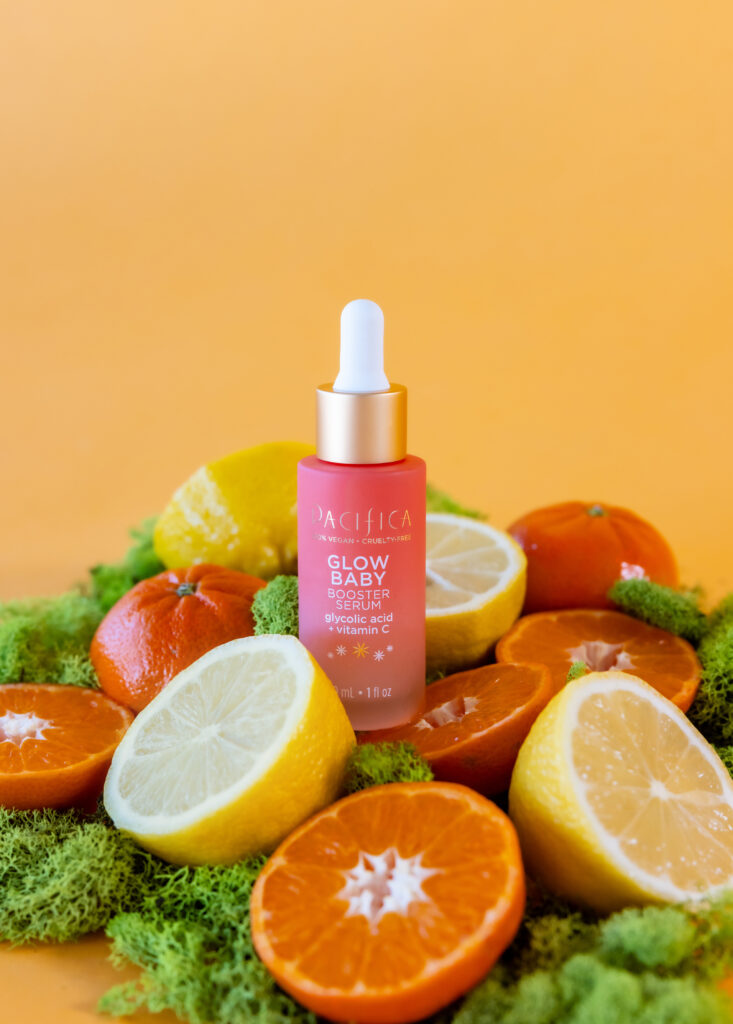How to Plan a Product Photoshoot
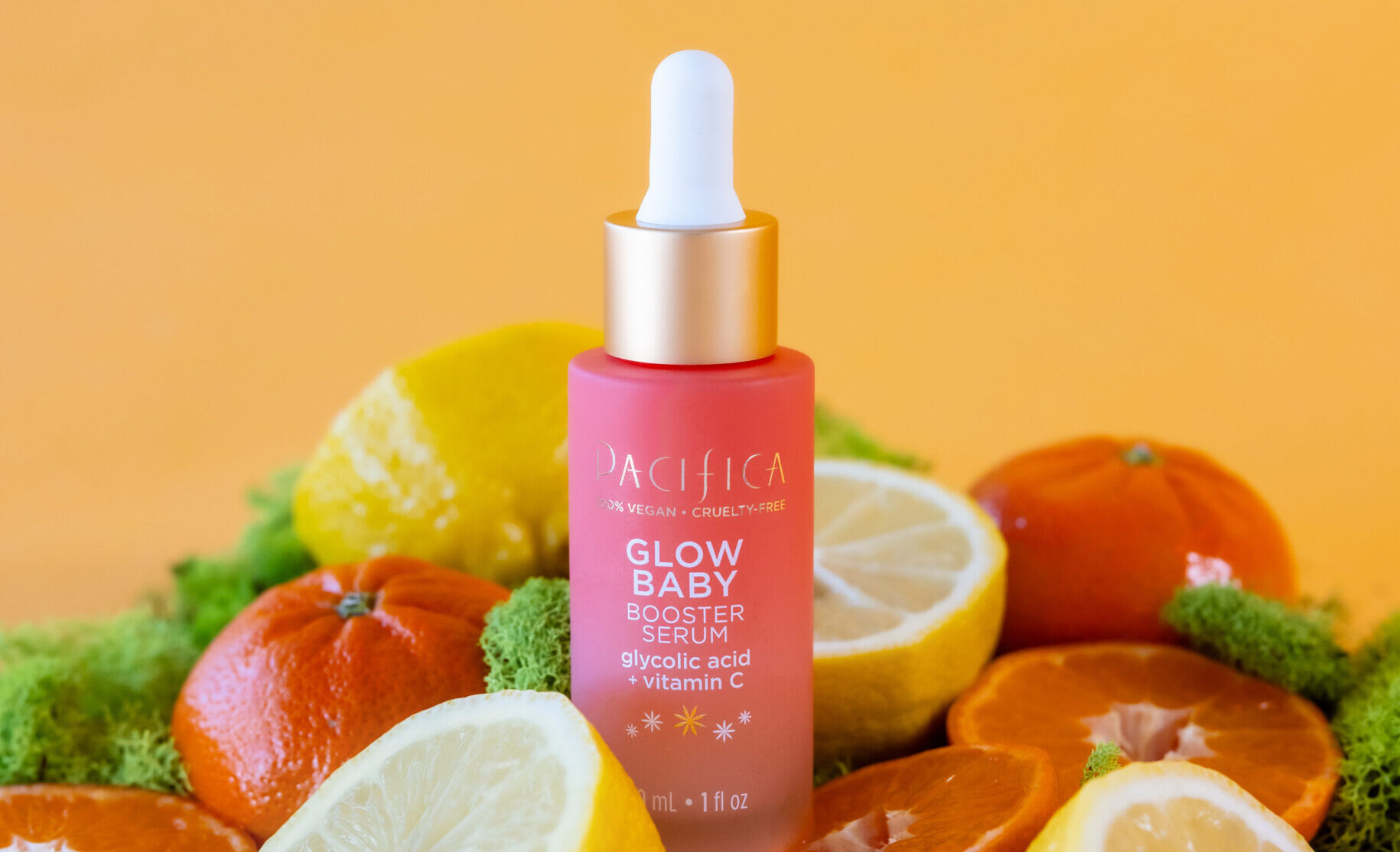
I strongly believe that one of the keys to feeling fulfilled as a branding photographer is working with brands that align with your values.
Collaborating with brands that share your beliefs allows you to create work that feels meaningful and authentic, which ultimately leads to stronger connections and better results. This is something I always stress the importance of to photographers I mentor—choosing the right clients not only builds your portfolio but also leads to a sustainable and rewarding career. Personally, I love working with positive-impact brands, as their missions inspire creativity and allow me to produce work that resonates on a deeper level. That’s why I was excited to create spec work for Pacifica, a vegan and natural product brand committed to compassion, clean beauty and sustainability. Their mission made them the perfect subject for a creative project. Over the years, I’ve worked with a variety of product brands—from skincare to candles—and through these experiences, I’ve developed a process for planning, shooting, and editing product photos effectively. Here’s how I planned and executed this shoot.
Gathering Inspiration for Your Mood Board
The first step I take when planning a product photoshoot is to go online and look for inspiration to create a mood board. This helps me refine my creative direction and ensures that the final images align with the brand’s identity. As a Dallas branding photographer, I know how important it is to maintain consistency in my portfolio while delivering images that fit seamlessly into a brand’s existing aesthetic. When curating your mood board, make sure to choose inspiration images that:
- Align with your photography style to ensure consistency across your portfolio and showcase your expertise as a photographer.
- Match the product’s brand identity so that the final images reflect the company’s visual style, messaging, and values.
- Fit the theme of the shoot, whether it’s minimalistic, vibrant, or moody, to reinforce the intended brand narrative.
- Incorporate creative and visually engaging elements that add uniqueness to your work and help it stand out in a competitive market.
For Pacifica’s shoot, I focused on images that featured bright colors, beach-inspired elements, and a clean, natural aesthetic to reflect the brand’s commitment to clean beauty. This step is important because it helps communicate the vision to clients, team members, and collaborators, making sure everyone is aligned before the shoot begins. Pinterest and Instagram are great sources for mood board inspiration, and combining different visual references can help refine and elevate the shoot concept.
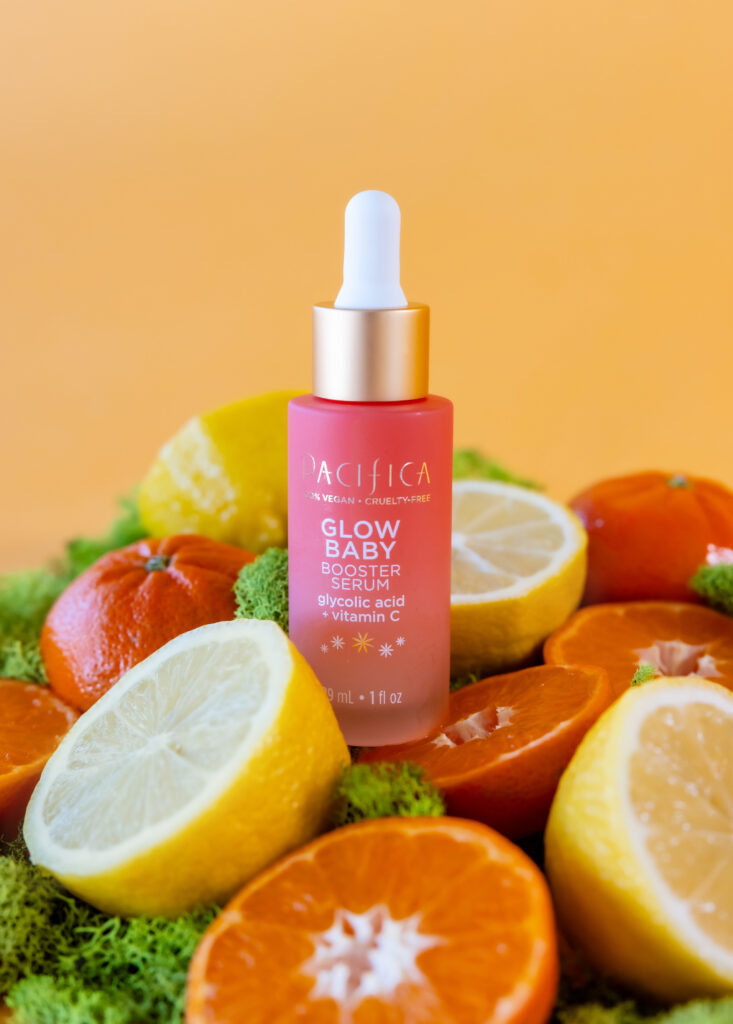
Creating a Prop List
Props make your product photos more unique by adding context, dimension, and visual interest. When selecting props, make sure they complement the product and reinforce the brand’s message rather than distract from it. For our Pacifica shoot, we chose sand and citrus elements as props to emphasize the brand’s natural and tropical elements. Other examples of great props are:
- Lifestyle elements like books, coffee cups, or office supplies.
- Geometric blocks and shapes
- Risers
- Plants and natural elements
Beyond aesthetics, props help set the stage for how a product is used, create context for storytelling, and provide a sense of scale so customers can better understand the size of the product. The right prop can also elevate the perceived value of a product, making it feel more luxurious or desirable. The best part is that props don’t have to be expensive—you can source them affordably from thrift stores, craft shops, or even use items you already have at home. Having a variety of props on-hand gives you the flexibility to experiment and refine your setup as you shoot.
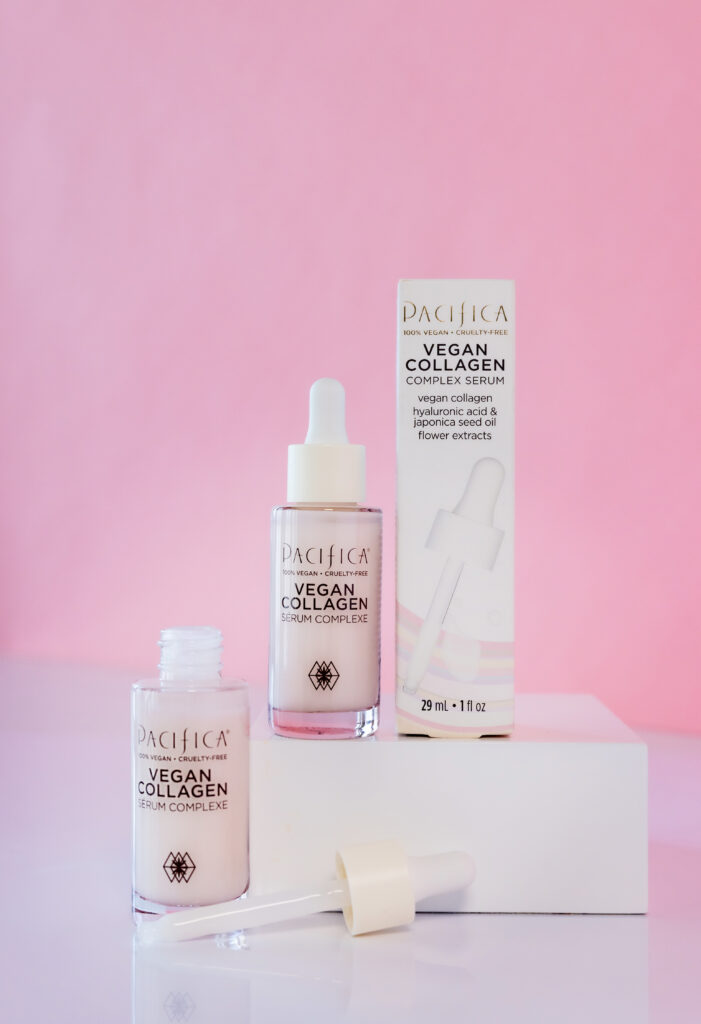
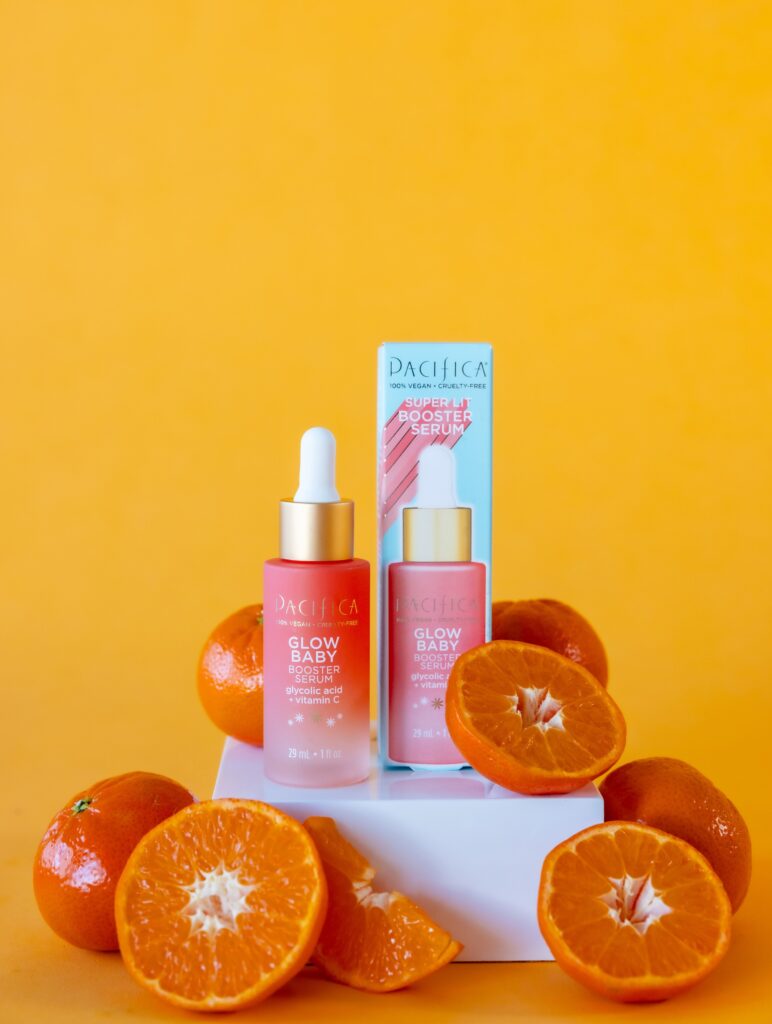
Creating a Timeline and Shot List
A well-planned shot list is so important for staying organized and making sure you get all the necessary images. Without one, it’s easy to forget key shots or run out of time before covering every angle. I always recommend creating a shot list that includes:
- Wide, mid, and close-up shots to provide variety and cater to different marketing needs.
- Product-only shots and lifestyle shots to show both the details and the real-world application of the product.
- Various angles and lighting setups to experiment with different perspectives and create dynamic compositions.
- Any detail shots that highlight product features, textures, or ingredients that differentiate the brand.
Pairing this with a timeline ensures the shoot stays on track, allowing enough time for setup, shooting, and adjustments. Giving specific time slots for different shots prevents last-minute rushing and guarantees a smooth workflow. Additionally, building in buffer time for unexpected delays, lighting adjustments, and creative experimentation can improve the overall quality of the final images.
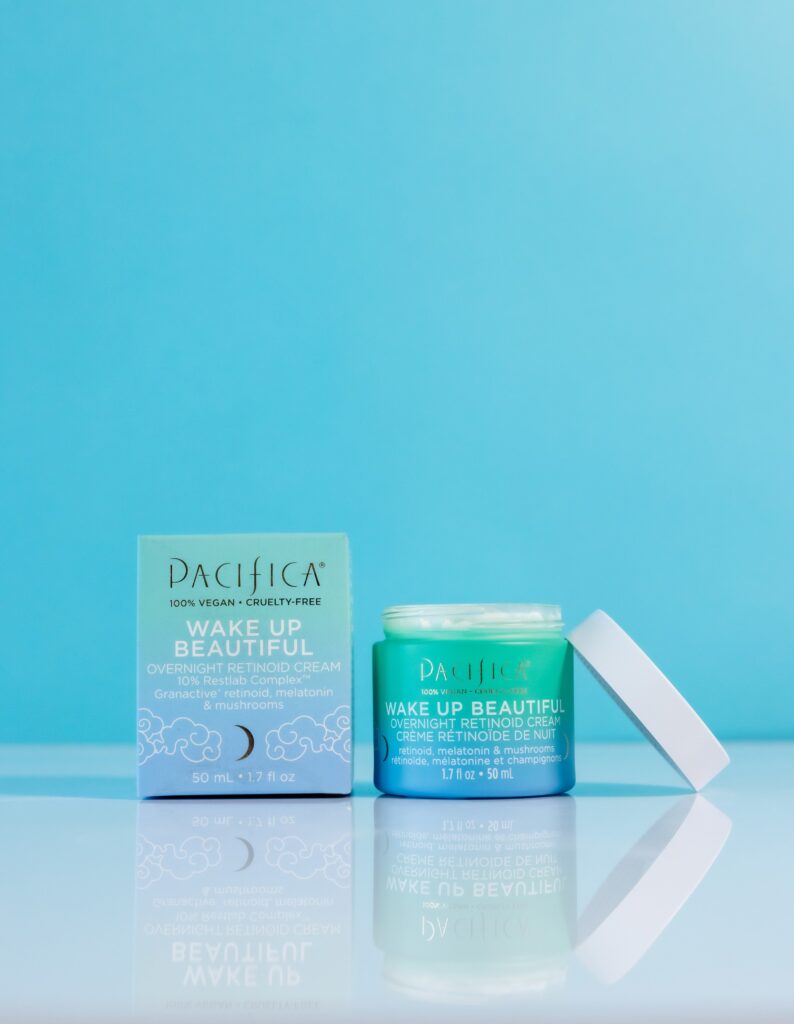
![]()
Finding a Great Location
Choosing the right location plays a significant role in the final outcome of your product shoot. The location should complement the product, enhance the overall aesthetic, and provide consistency in lighting and background. Whether you shoot indoors or outdoors, choose a setting that allows you to capture high-quality images that align with the brand’s theme. Some options include:
- Studio Spaces: If you prefer controlled lighting and backdrops, renting a studio like Brightside Studios in Dallas is a great option. Studios offer customizable setups, ensuring the background and environment perfectly suit the brand’s needs.
- Outdoor Locations: For brands that want a natural, lifestyle-driven feel, shooting at parks, beaches, or urban settings can add depth and realism to the images. Outdoor locations can also enhance the storytelling aspect by showing products in relatable, everyday scenarios.
- Indoor Spaces: Homes, cafés, and boutique hotels can provide a cozy, lived-in aesthetic that makes products feel more approachable and relatable. Shooting in indoor spaces allows for controlled natural light and creates an intimate setting, ideal for lifestyle branding. Consider locations with large windows, textured walls, or stylish décor that complements the product’s identity.
Before finalizing a location, consider factors such as weather conditions, natural lighting availability, and potential distractions in the environment. Conducting a location scout beforehand can help identify the best angles and ensure a smooth photoshoot day.
Lighting and Angles
Lighting is key to making your product images stand out. Your choice of lighting should highlight the product’s details and create visual interest. Some common lighting styles include:
- Bright and Clean: Ideal for skincare, beauty, and wellness brands as it gives a fresh, vibrant look that emphasizes product purity.
- Moody and Dramatic: Works well for luxury and high-end products, adding depth and a sophisticated feel to the images.
- Natural Light: Great for lifestyle-focused brands that want a more organic and relatable aesthetic, capturing soft shadows and highlights.
For the Pacifica shoot, we opted for bright, well-lit images to highlight the vibrant packaging. Playing with angles also adds variety to your shots. Some effective angles include:
- Flat Lays: Perfect for showcasing multiple products and creating visually appealing compositions.
- 45-Degree Angles: A great middle ground between flat lays and front-facing shots, offering depth and perspective.
- Macro Shots: Ideal for capturing intricate details like product texture, branding, and key ingredients.
Incorporating Brand Style
One of the most important aspects of a successful product shoot is ensuring it aligns with the brand’s existing visual identity. Before shooting, research the brand by:
- Visiting their website and social media pages to analyze their previous content.
- Identifying their core colors, themes, and aesthetic choices to maintain consistency.
- Noting any recurring motifs or elements that can be incorporated into your shoot.
For Pacifica, we incorporated their signature vibrant colors—blue, pink, and orange—into the backdrops and props. Since the brand frequently uses beach imagery, we included elements like sand to maintain consistency with their overall aesthetic. Staying true to the brand’s visual identity while adding a fresh, creative twist ensures the final images feel authentic and aligned with their messaging.
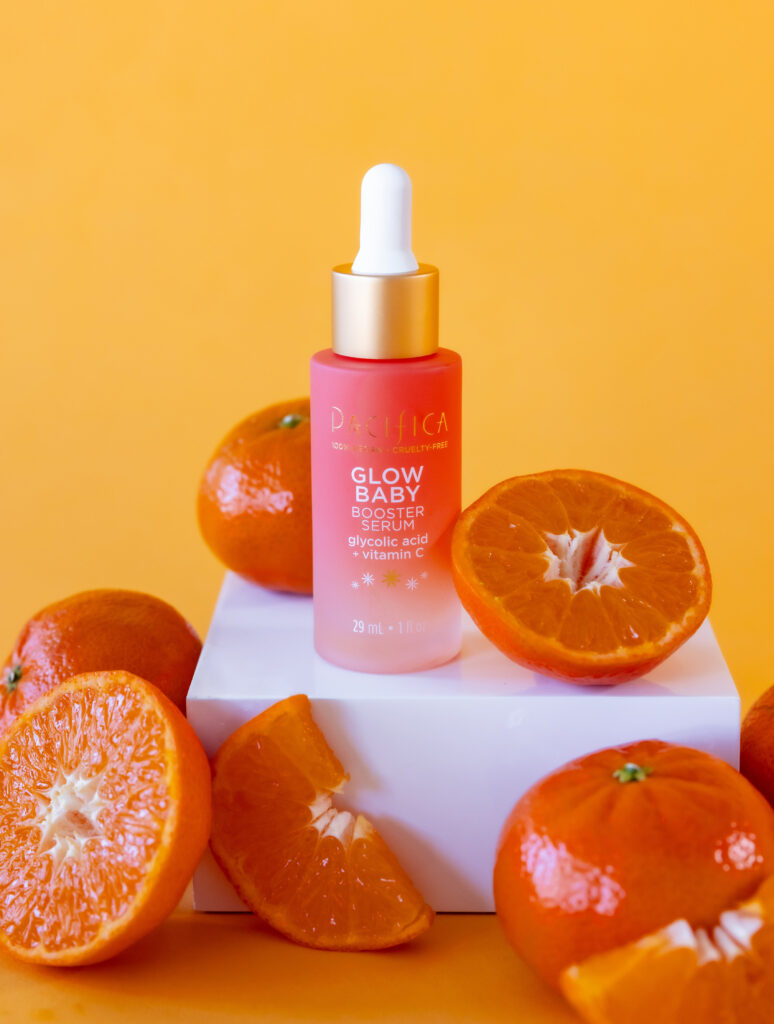
Want to learn more about Pacifica? Check out their Instagram. If you’re interested in trying out some of Pacifica’s products, you can purchase them directly on Amazon. (Note: These are affiliate links.)
- Pacifica Shampoo & Conditioner Set – Pineapple Curls Curl Defining Hair Care
- Pacifica Beauty Glow Baby Booster Serum For Face
- Pacifica Face Serum Vegan Collagen Complex Serum
- Pacifica Wake Up Beautiful Overnight Retinoid Night Face Cream
If you’re a photographer looking to break into branding or lifestyle product photography, I offer 1:1 coaching calls to help you grow or pivot your business. Whether you’re looking to refine your style, book more clients, or improve your workflow, I’d love to help you reach your goals. Send me an email at info@monikanormandphoto.com and let’s get started!


